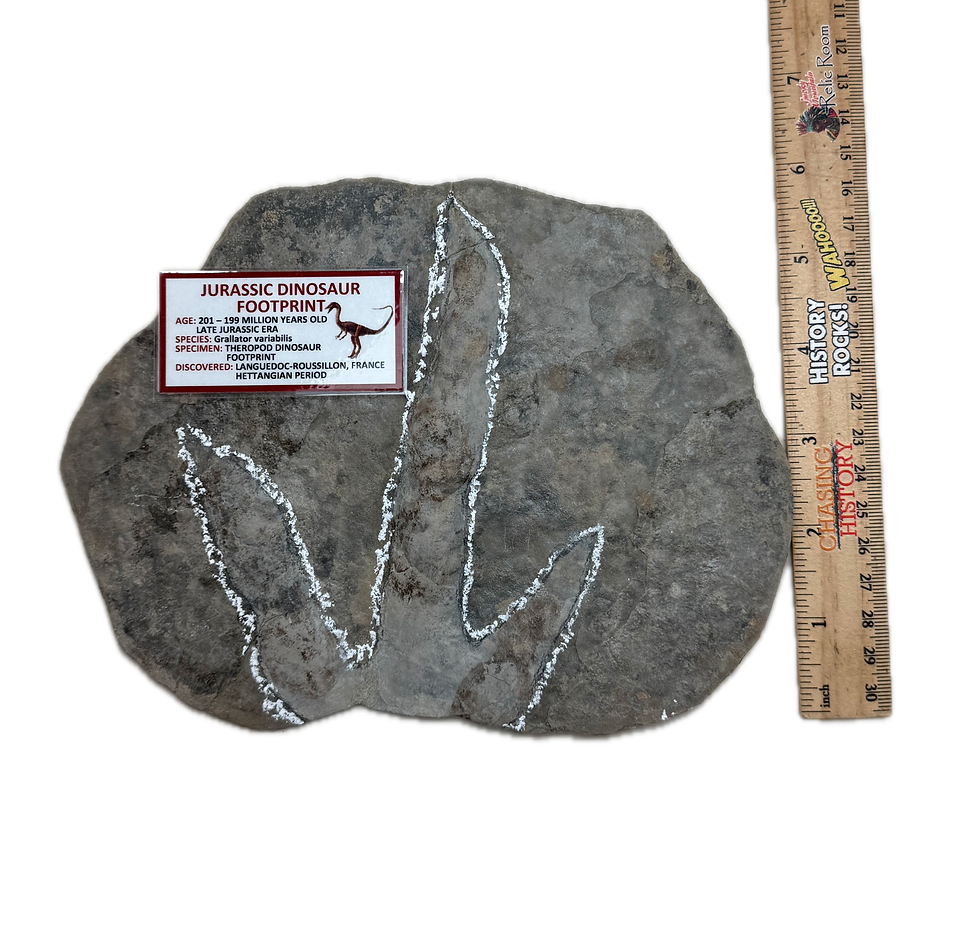Cretaceous Predatory Fish Vertebrae
Age: 112 / 66 Million Years Old
(Late Cretaceous)
Species: Xiphactinus
Discovered: Kansas - Niobrara Formation
- Multiple displays available. Each fossil will have variances in size, shape, etc.
- The Xiphactinus
Xiphactinus (from Latin and Greek for "sword beam") is a wiped out class of huge savage marine hard fish that lived during the Late Cretaceous (Albian to Maastrichtian). At the point when alive, the fish would have looked like a huge, fanged tarpon (to which it was, be that as it may, not related).The species Portheus molossus portrayed by Cope is a lesser equivalent of X. audax. Skeletal remaining parts of Xiphactinus have come from the Carlile Shale and Greenhorn Limestone of Kansas (where the main Xiphactinus fossil was found during the 1850s in the Niobrara Chalk), and Cretaceous developments all around the East Coast (most quite Georgia, Alabama, North Carolina, and New Jersey) in the United States, as well as Europe, Australia, the Kanguk and Ashville Formations of Canada, La Luna Formation of Venezuela and the Salamanca Formation in Argentina.
Types of Xiphactinus were insatiable savage fish. Essentially twelve examples of X. audax have been gathered with the remaining parts of enormous, undigested or somewhat processed prey in their stomachs. Specifically, one 4.2 meters (14 ft) fossil "Fish-Within-A-Fish" example was gathered by George F. Sternberg with another, almost impeccably protected 1.9 meters (6.2 ft) long ichthyodectid Gillicus arcuatus within it. The bigger fish clearly kicked the bucket not long after eating its prey, probably attributable to the more modest prey's battling and cracking an organ as it was being gulped. This fossil should be visible at the Sternberg Museum of Natural History in Hays, Kansas.
In the same way as other different species in the Late Cretaceous seas, a dead or harmed individual was probably going to be searched by sharks (Cretoxyrhina and Squalicorax). The remaining parts of a Xiphactinus were found inside an enormous example of Cretoxyrhina gathered by Charles H. Sternberg. The example is in plain view at the University of Kansas Museum of Natural History.
Basically nothing is had some significant awareness of the larval or adolescent stages. The littlest fossil example of X. audax comprises of a tooth-bearing premaxilla and lower jaws of an individual assessed to be around 12 inches (30 cm) long.
The species and any remaining ichthyodectids became wiped out close to the furthest limit of the Late Cretaceous - see Cretaceous-Paleogene elimination occasion.
top of page
SKU: FOSB57
$15.00Price
Related Products
bottom of page





















